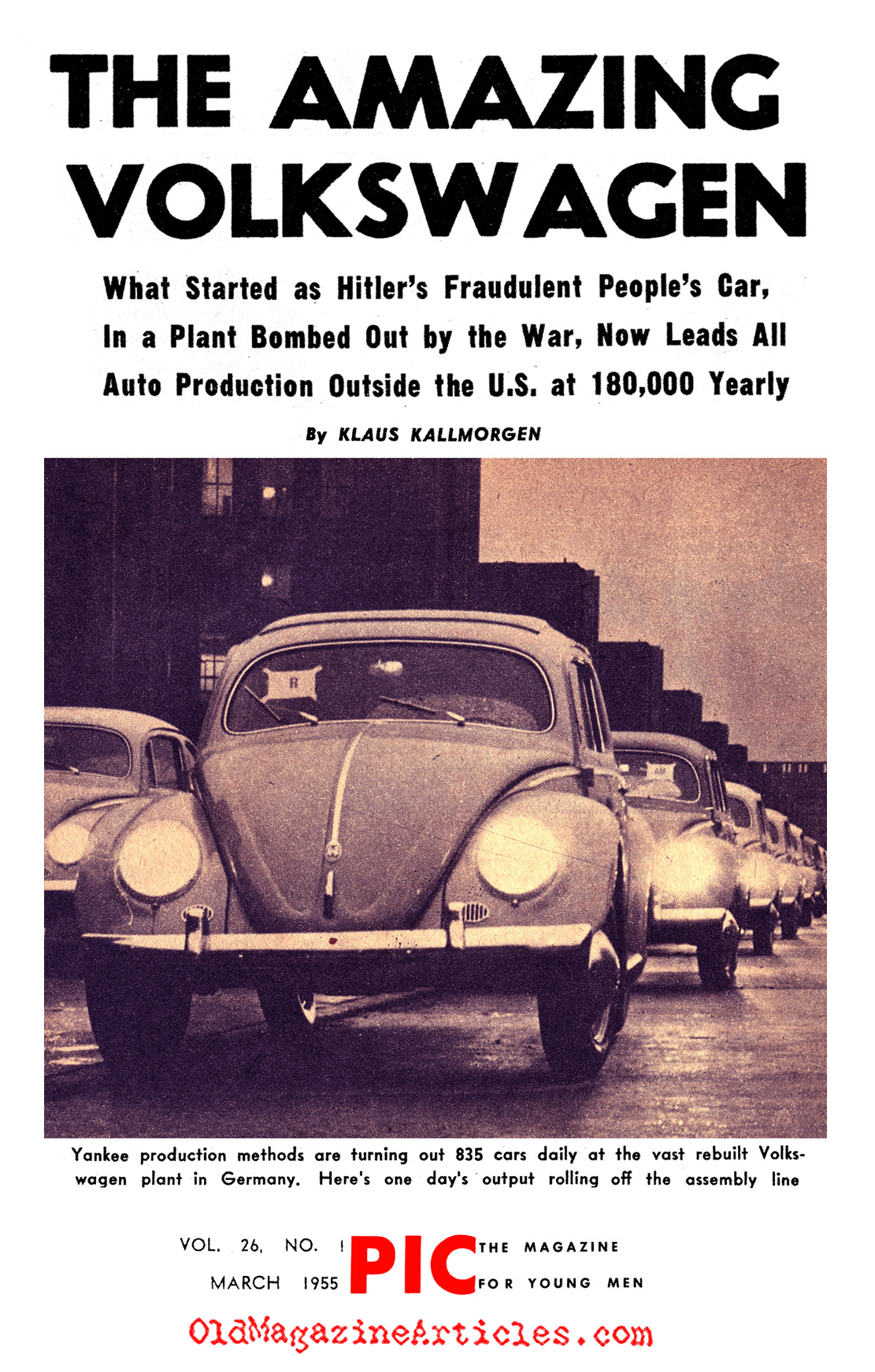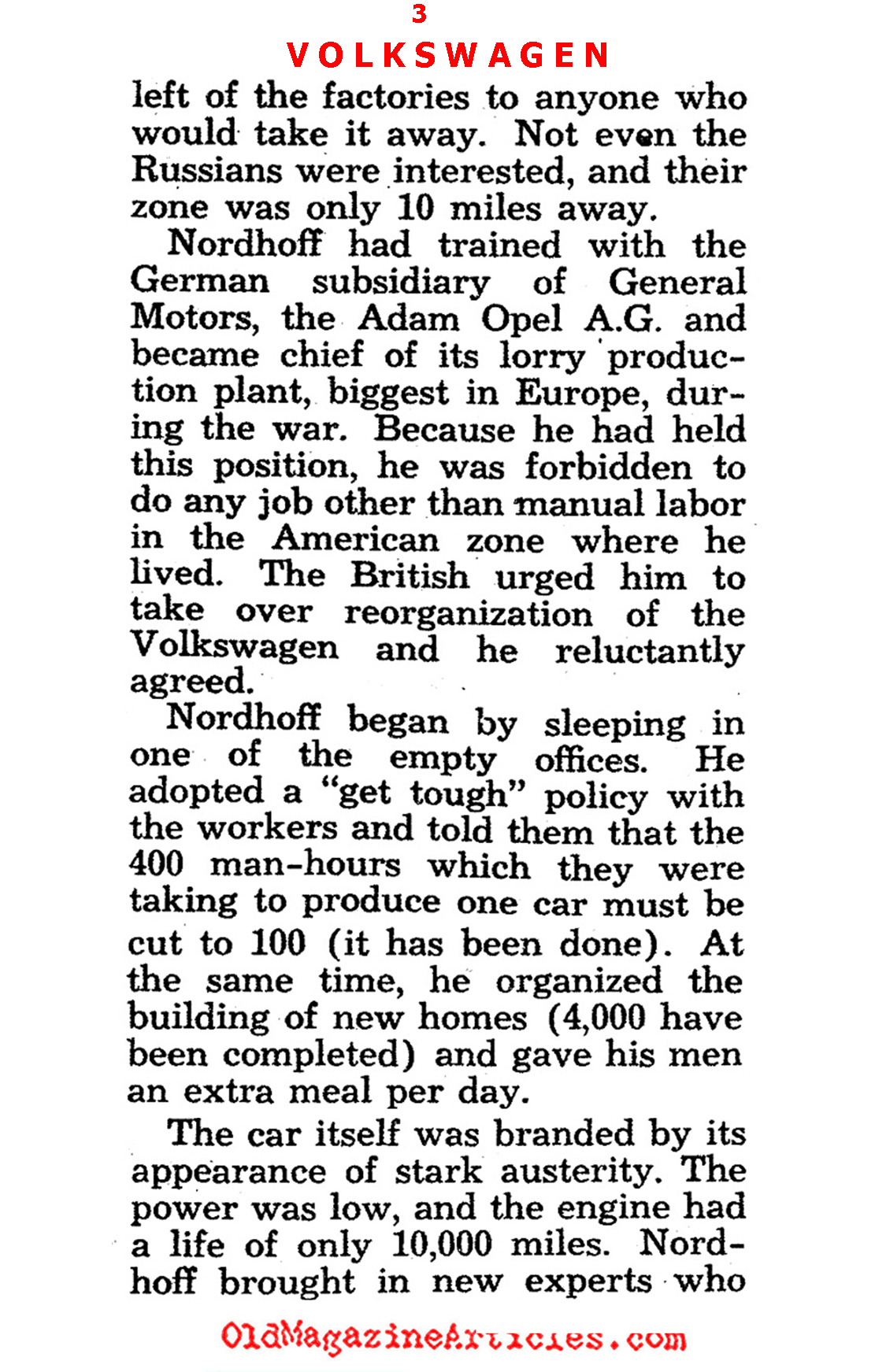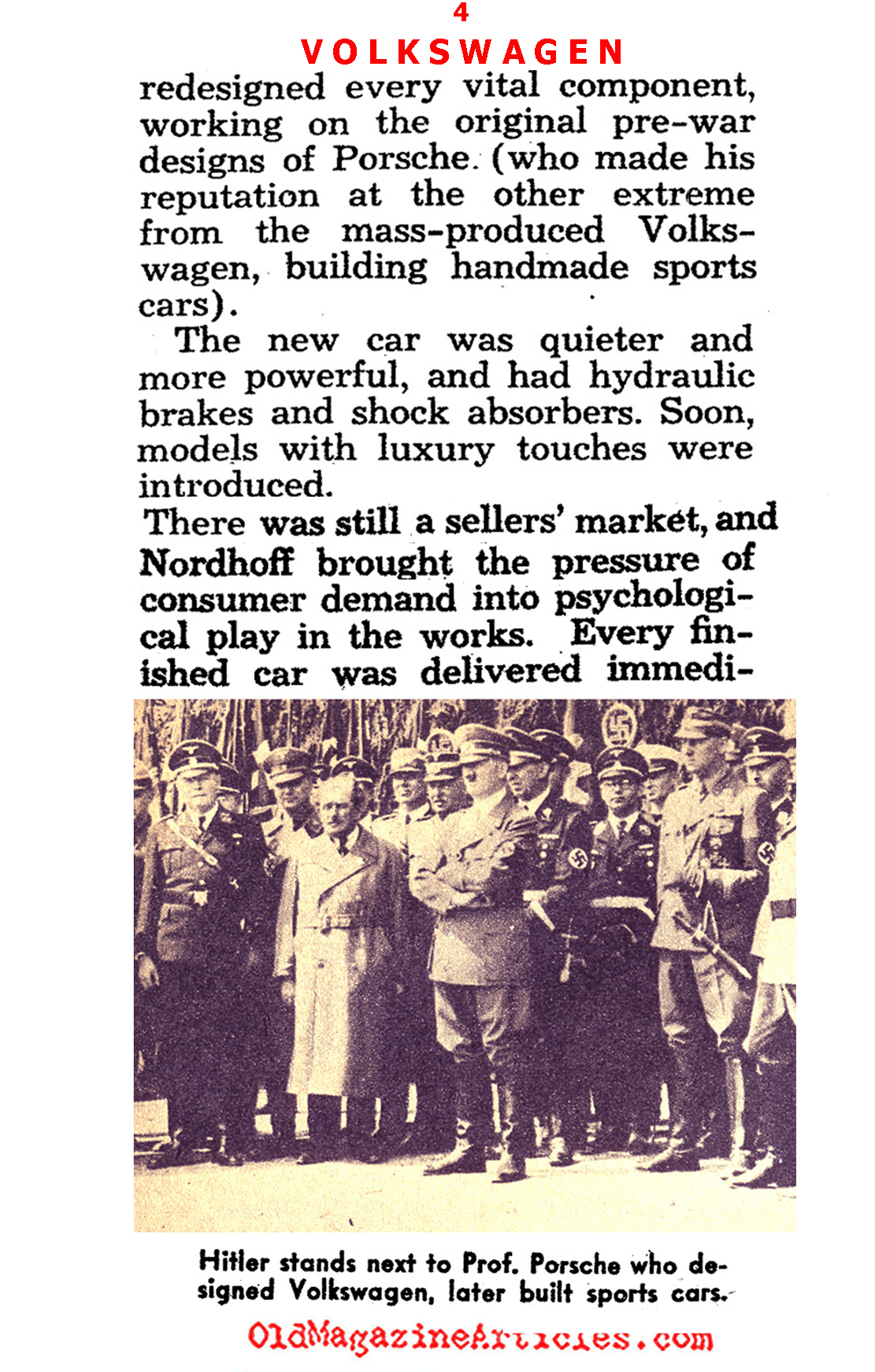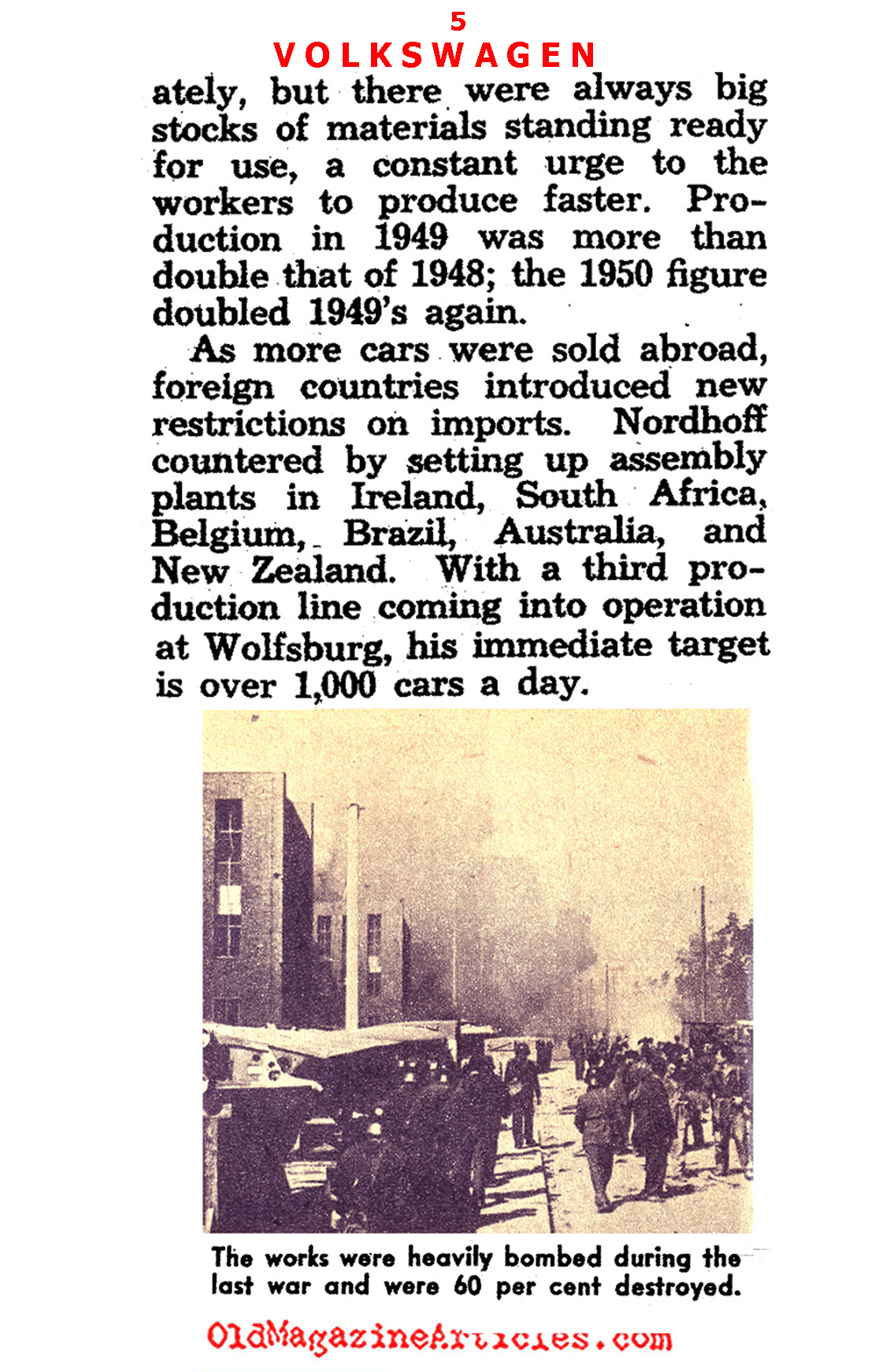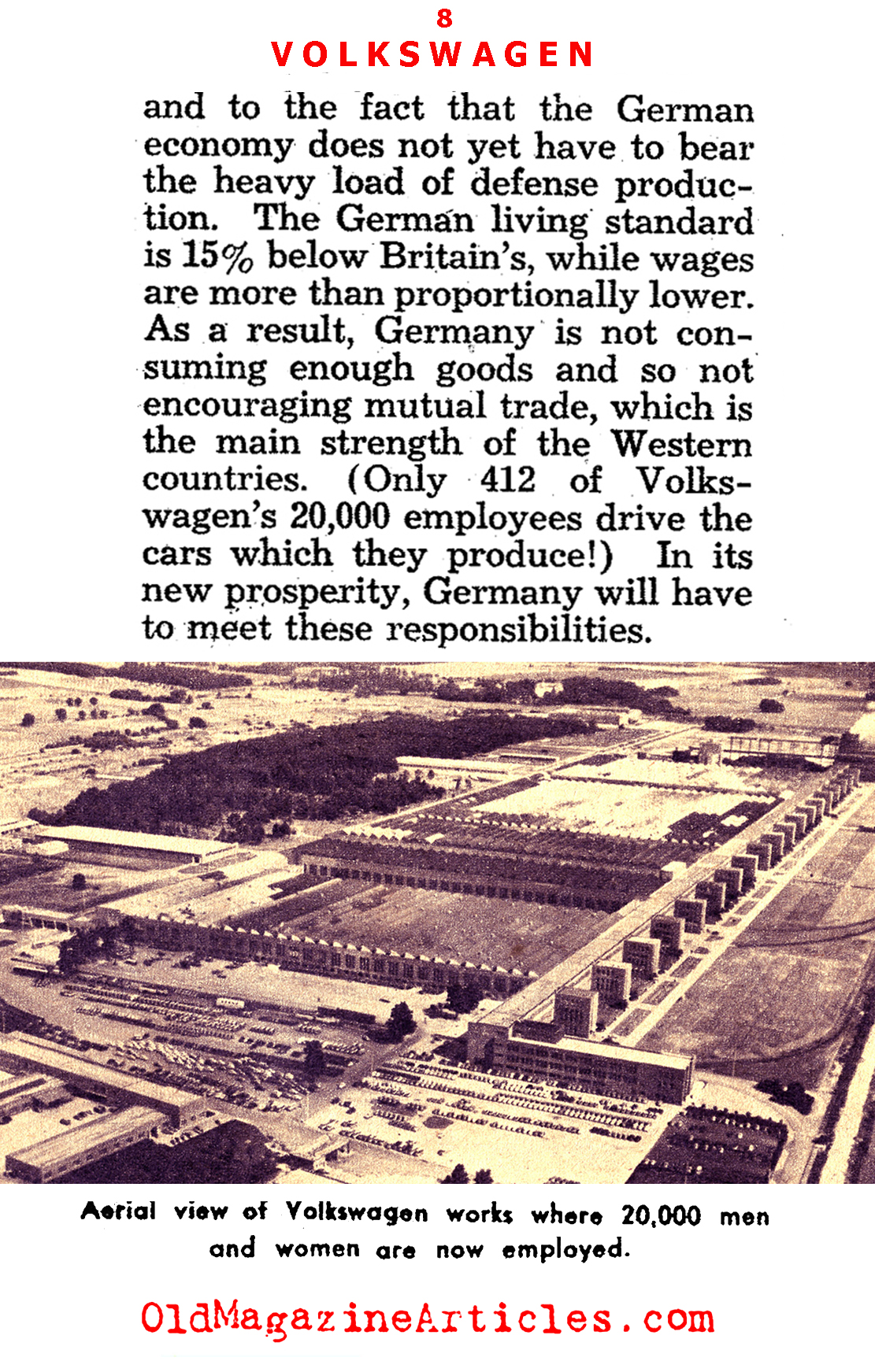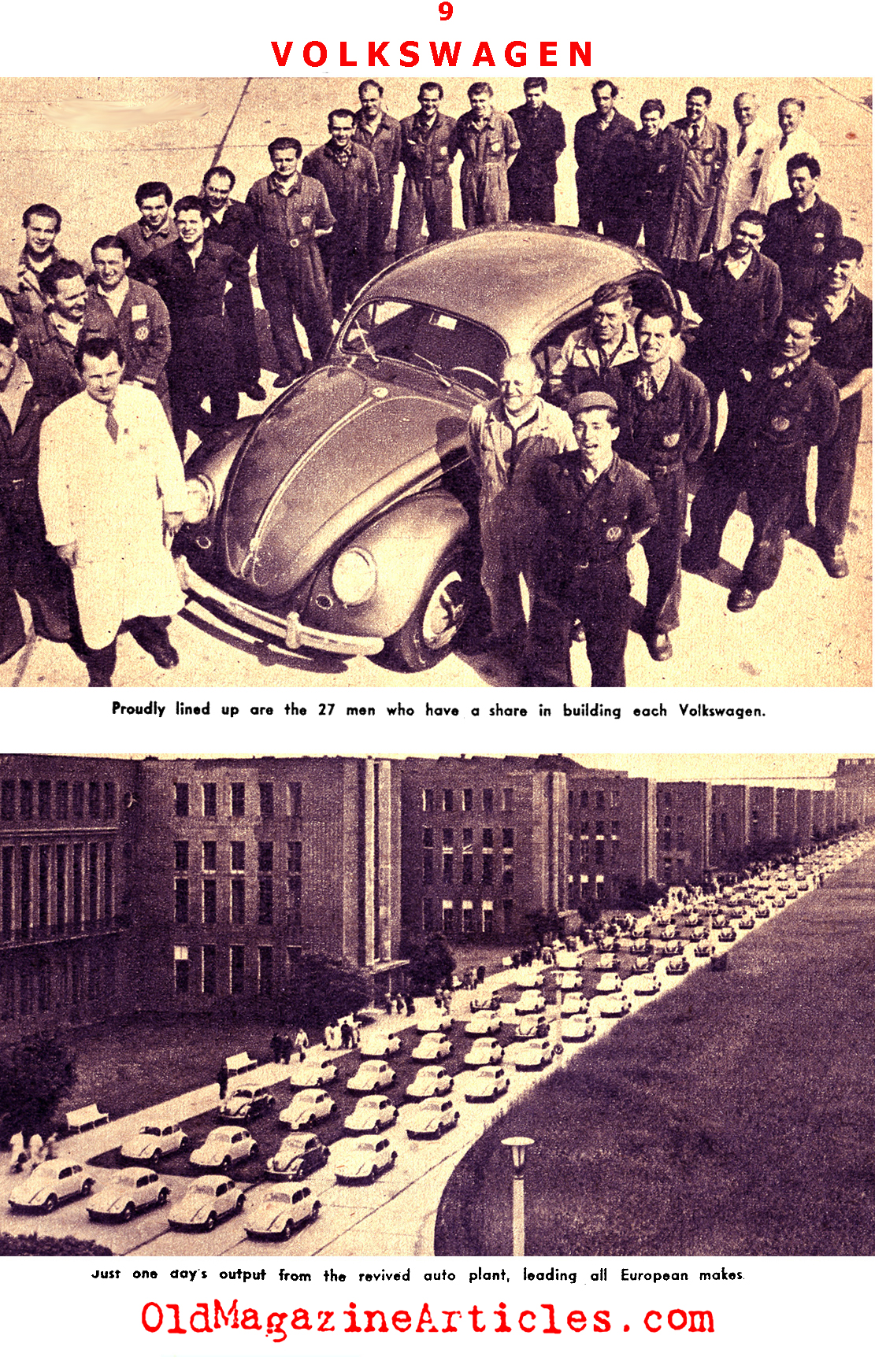Throughout the years that followed the close of the Second World War, there was always one topic of conversation that could be relied upon to keep the chat lively; it involved the collective wonderment the world shared when they read about the endless drive and boundless productivity that compelled the Germans and Japanese ever forward.
Out of the smoldering ruins of Japan came the Honda factories; while Germany amazed their old enemies by rapidly beating their crematoriums into Volkswagens. Confidently managed by a fellow who only a short while before was serving as a lowly private in Hitler’s retreating army, Volkswagen quickly retooled, and made the vital improvements that were necessary to compete in the global market:
“Over 200,000 of the half million Volkswagens which have been produced since 1945 have been exported to over 100 countries. This represents vigorous competition for the world’s biggest car exporting country, Britain… The German living standard is 15% below Britain’s, while wages are more than proportionally lower. As a result, Germany is not consuming enough goods and so not encouraging mutual trade, which is the main strength of the Western countries.”
KEY WORDS: Wirtschaftswunder article,industrial recovery 1945 germany,German economic recovery 1945-1955,german economic recovery Wirtschaftswunder artikel,industrial Renaissance in post-war Germany,post-ww2 germany industrial footing,re-built factories in post-war germany,german industrial exports 1945,auto industry in post-war germany,Wirtschaftswunder 1950s Germany








































